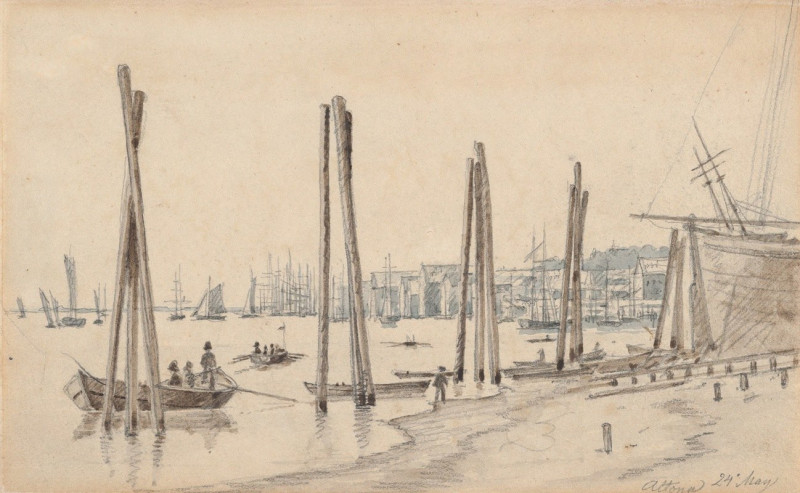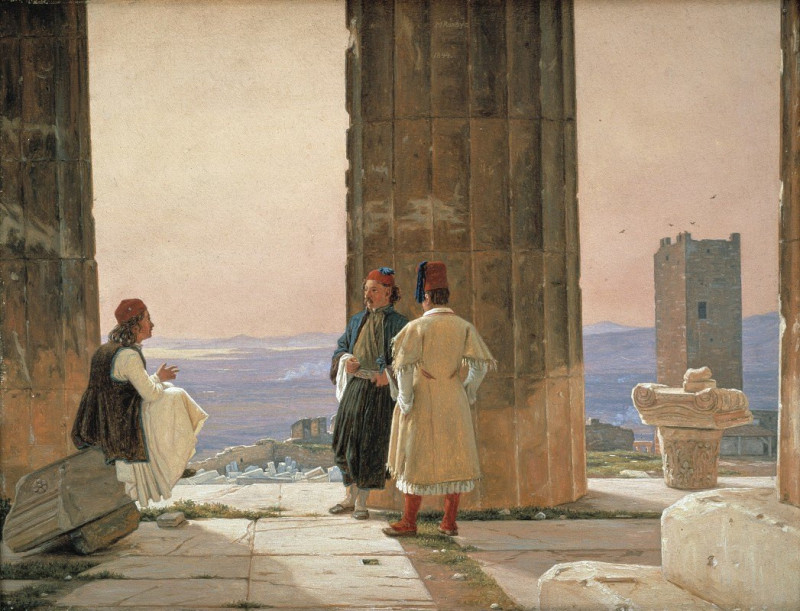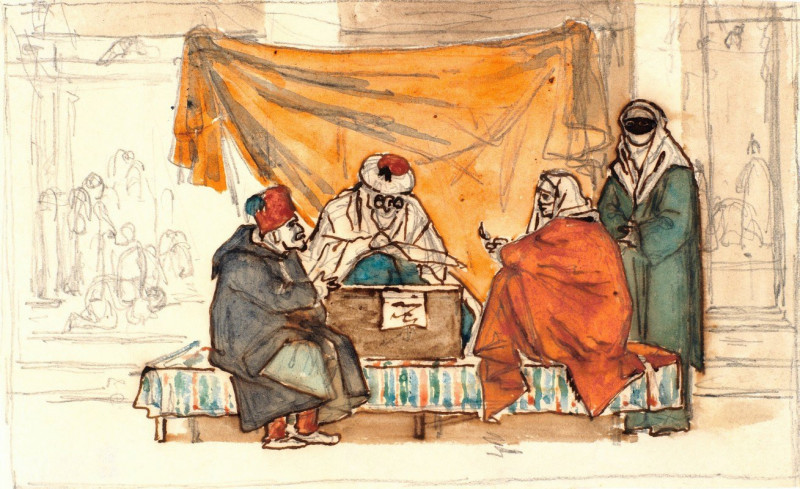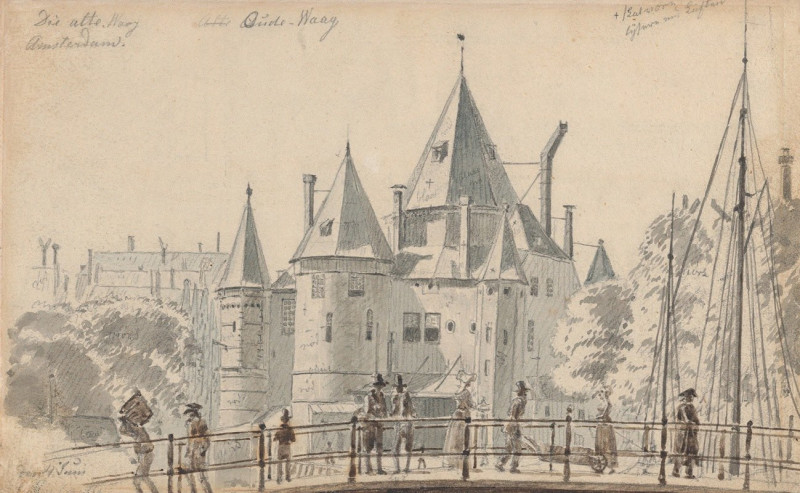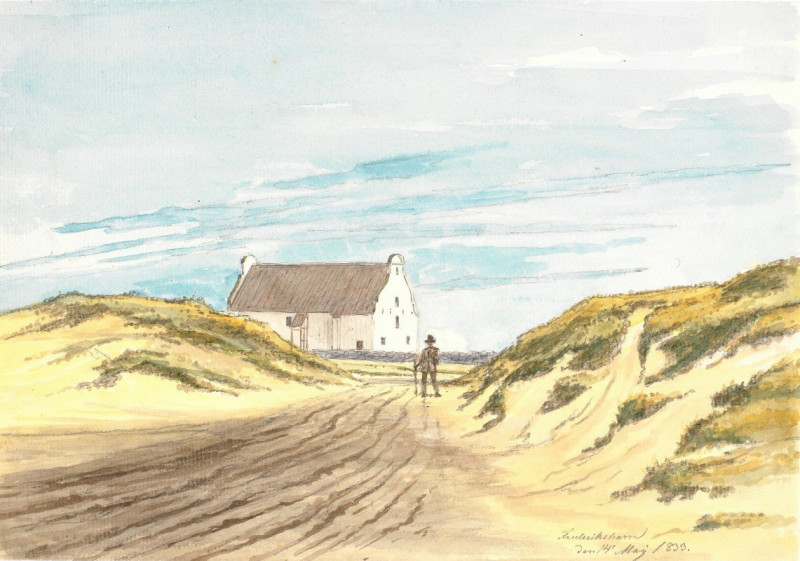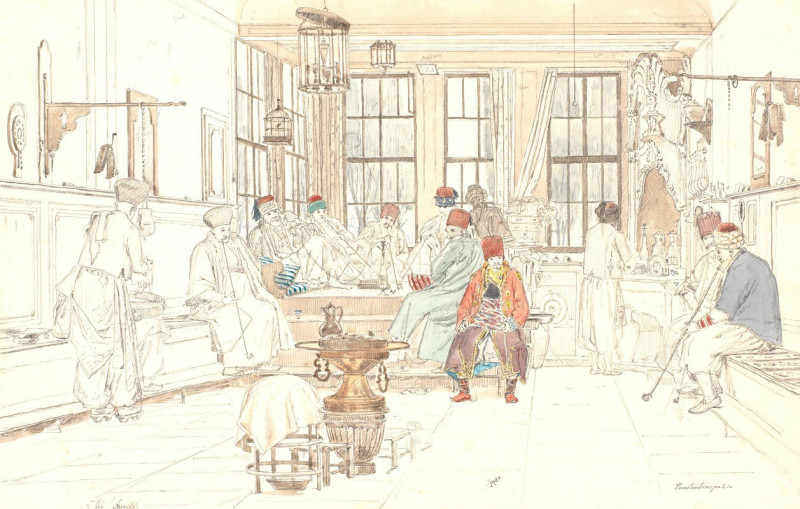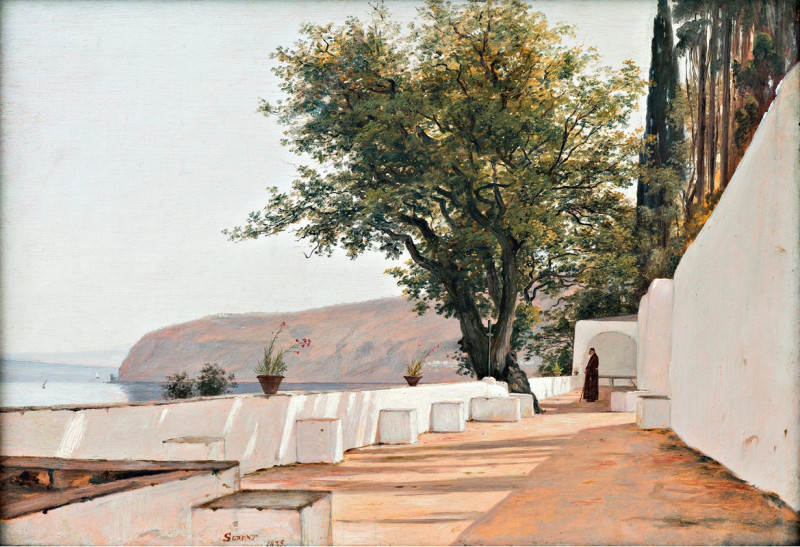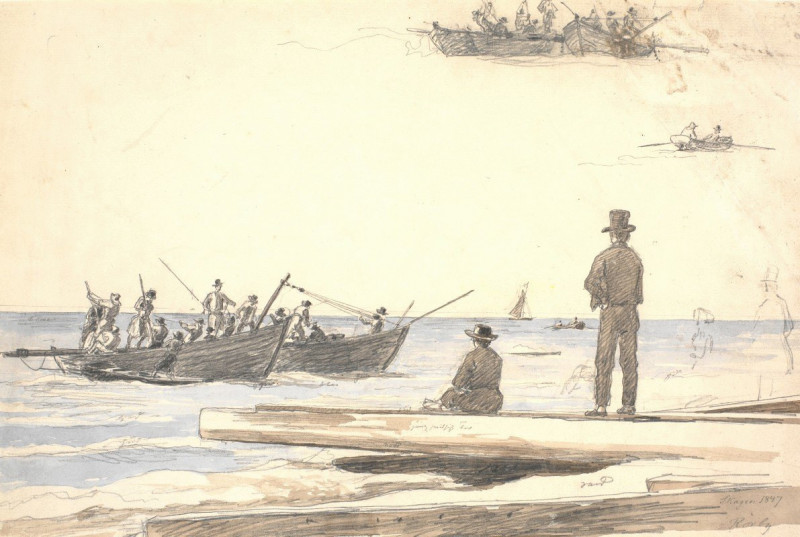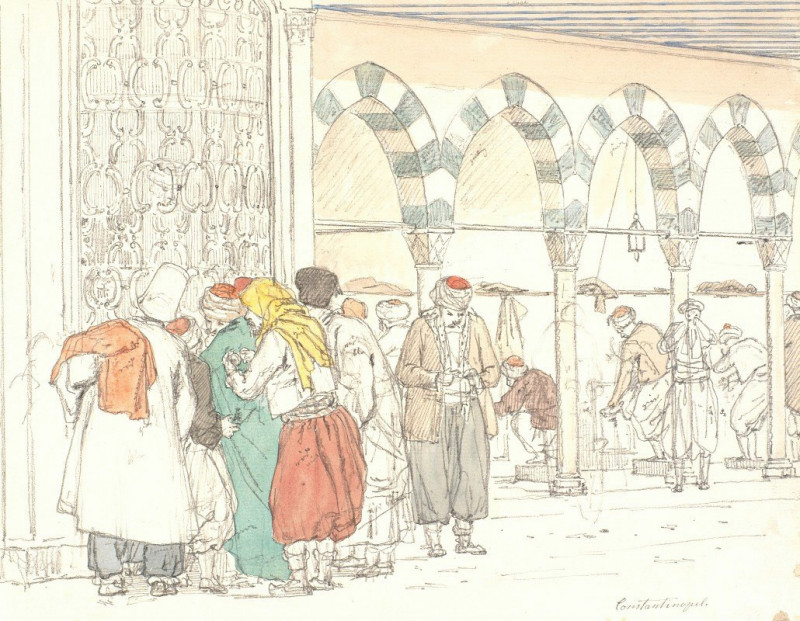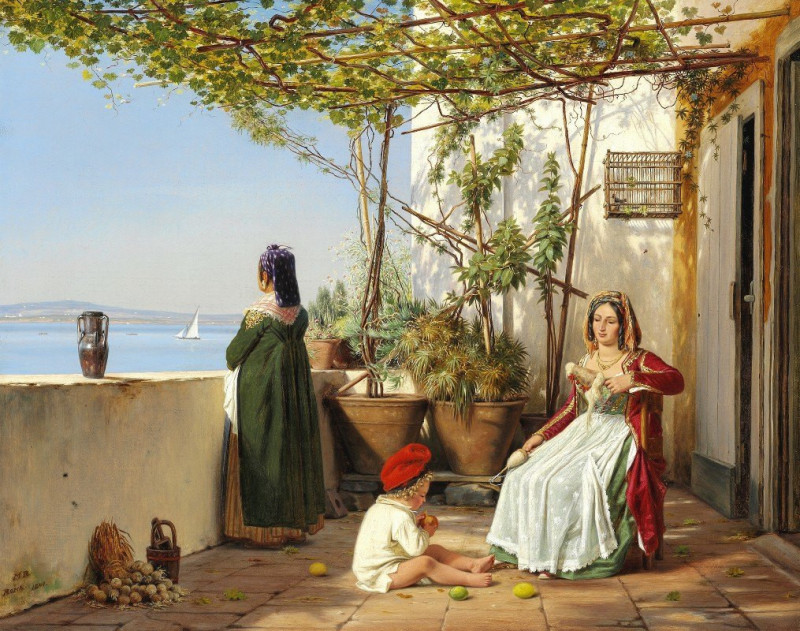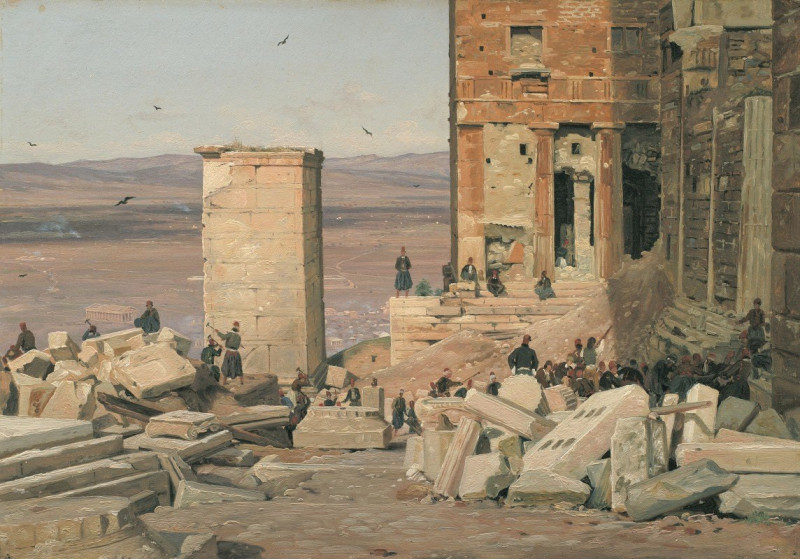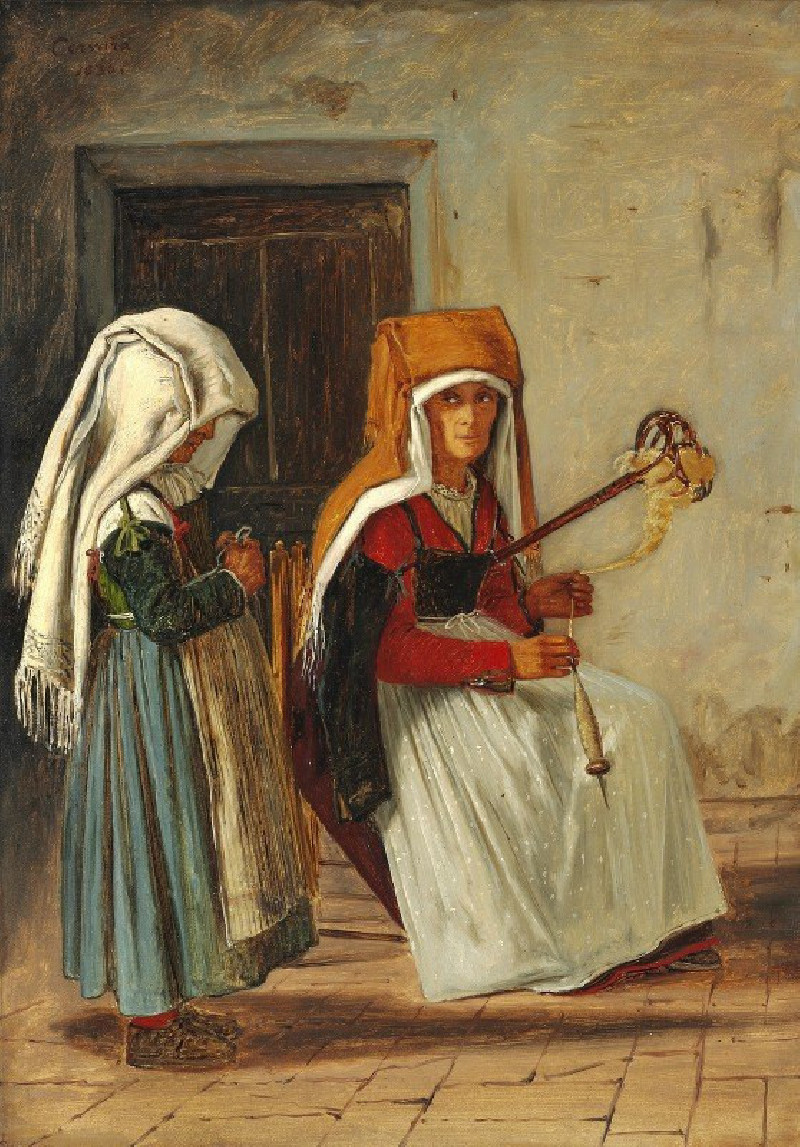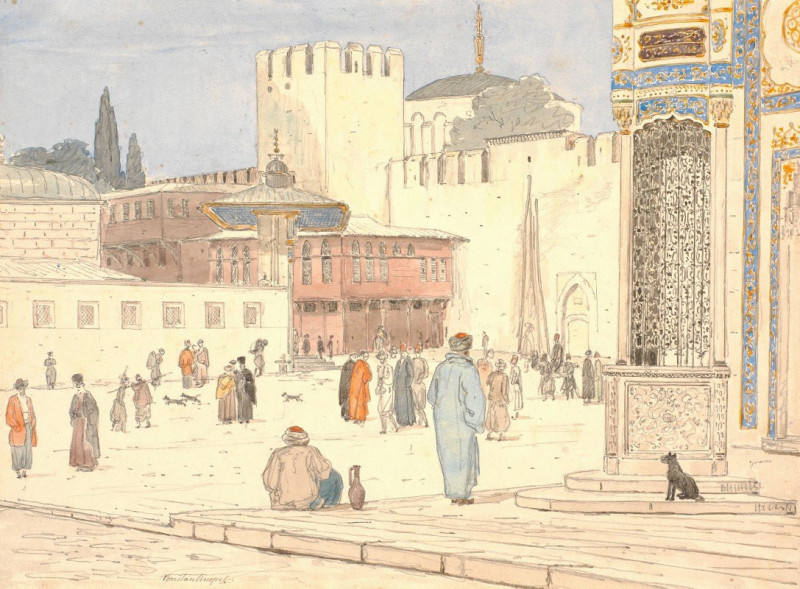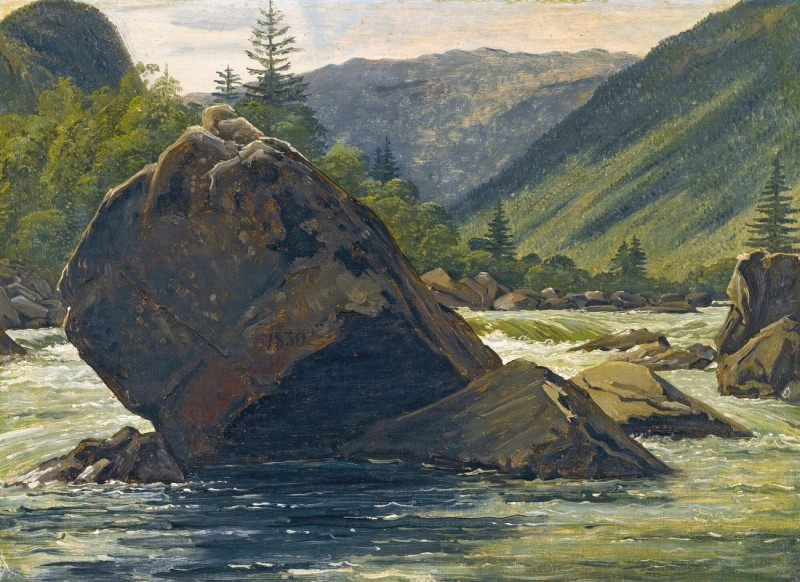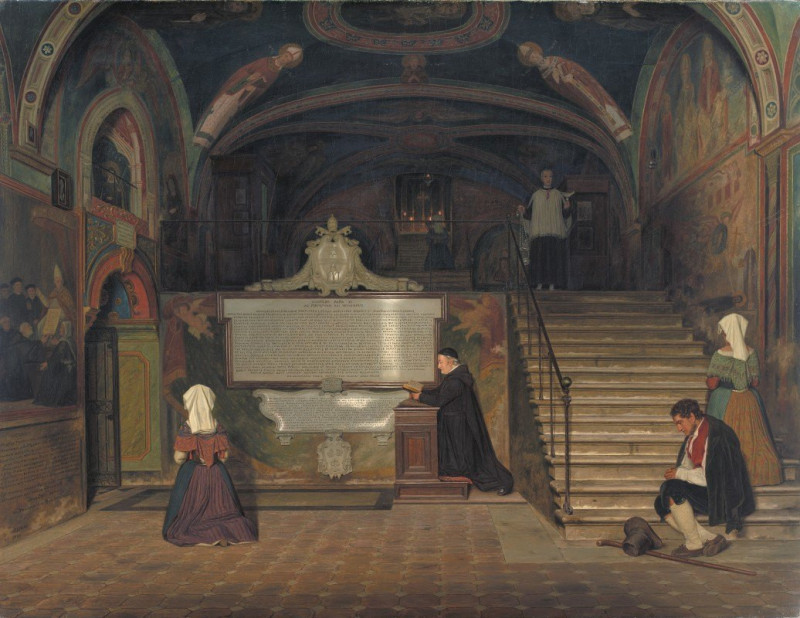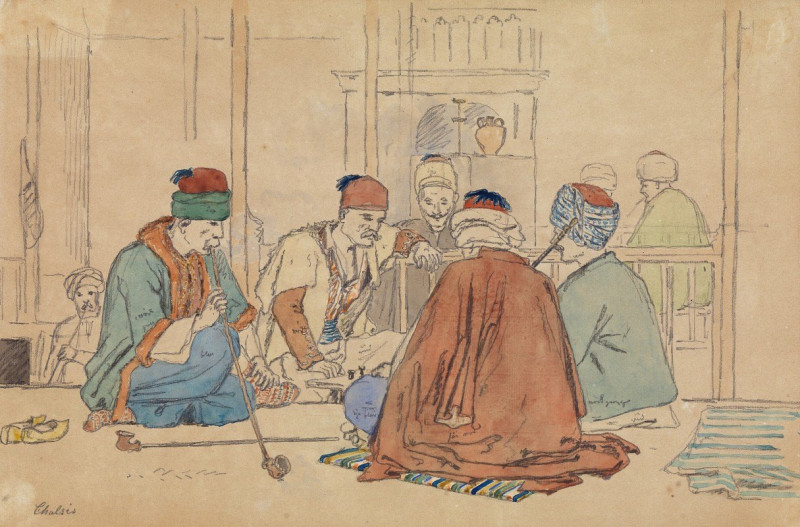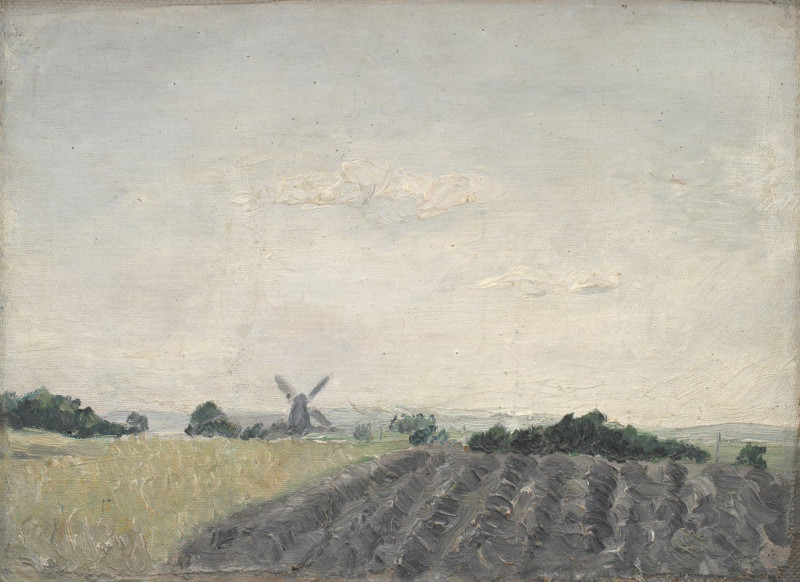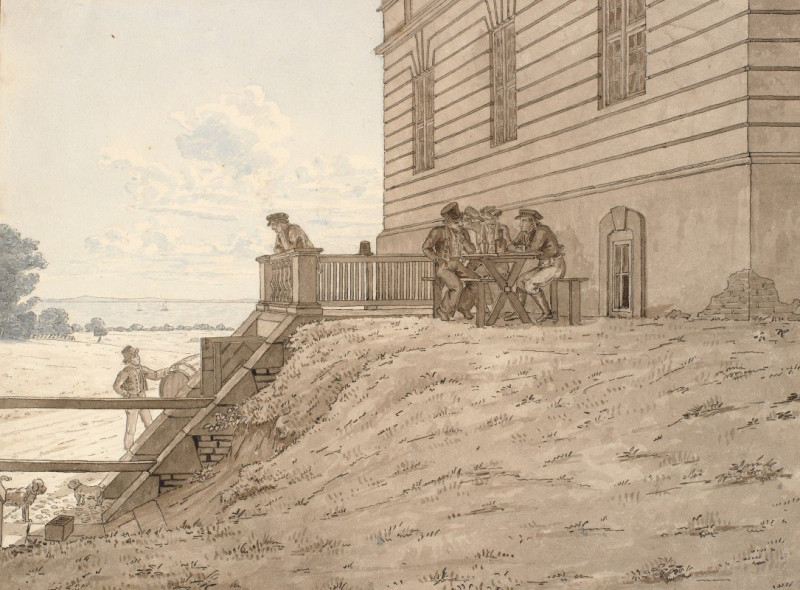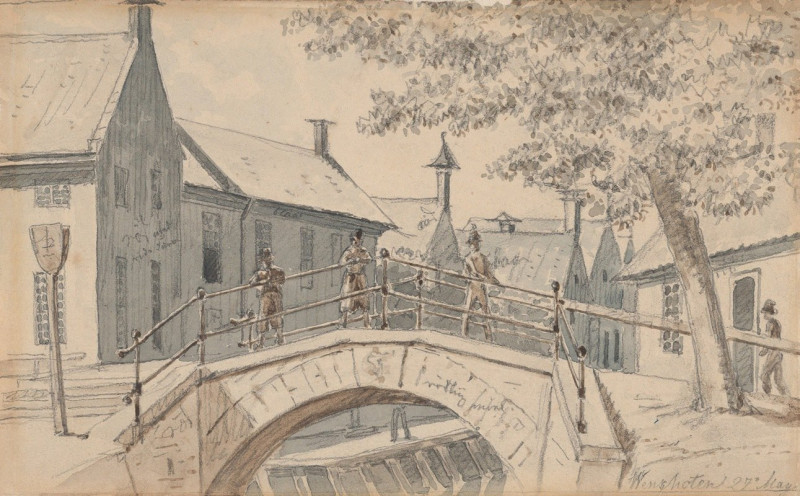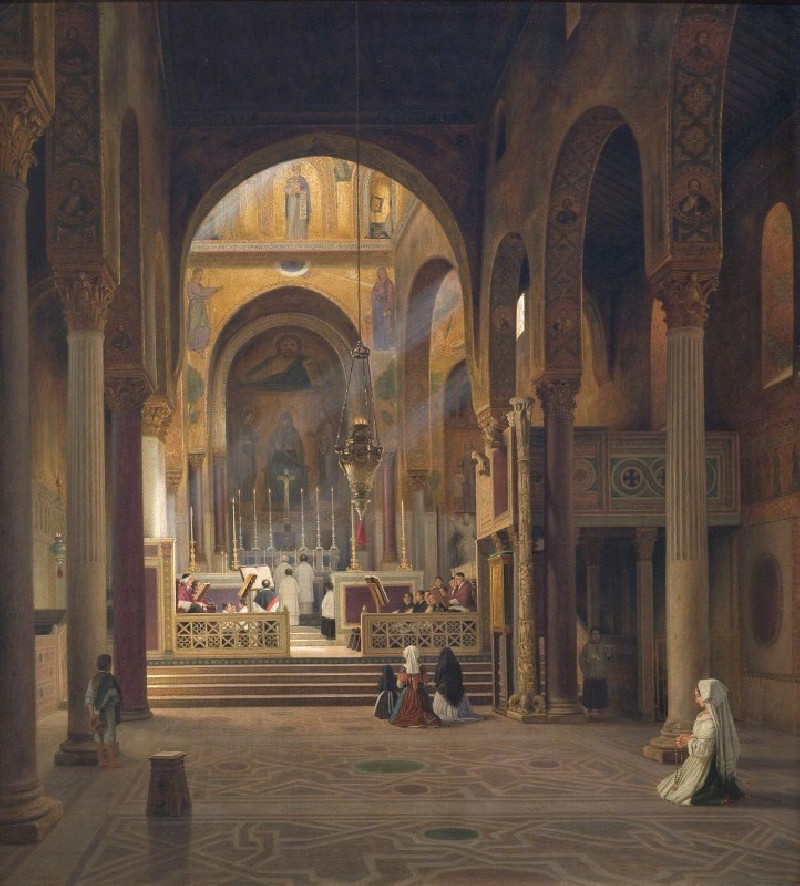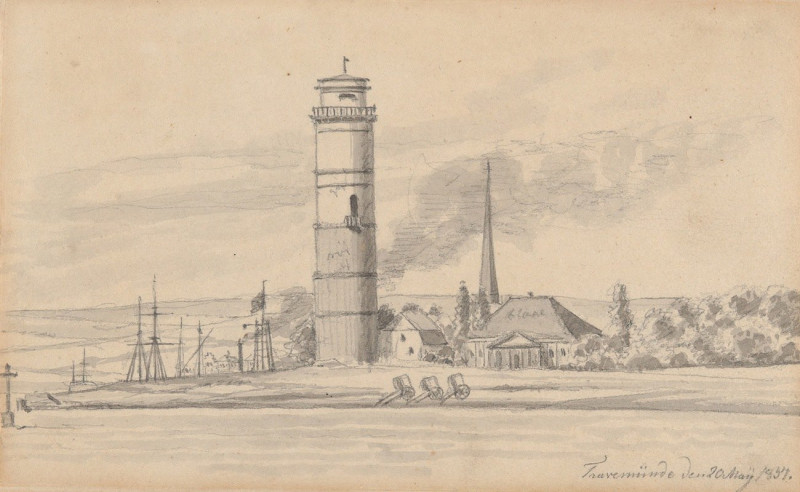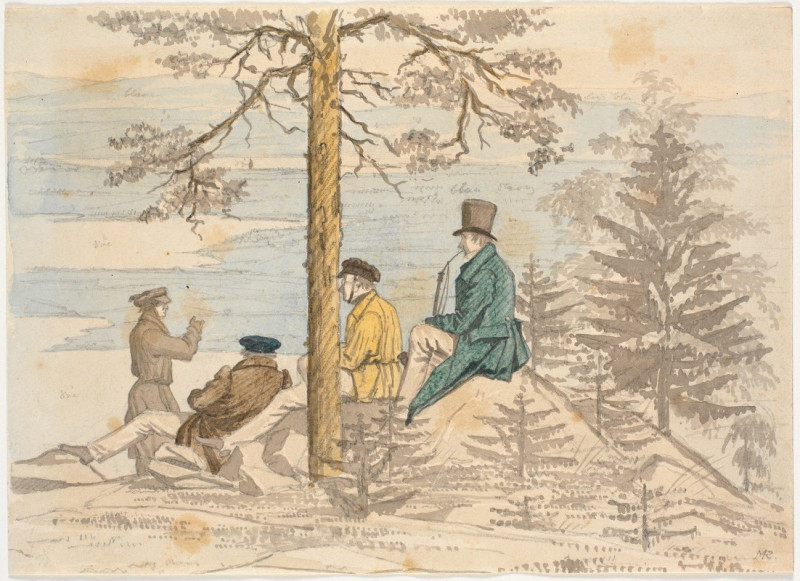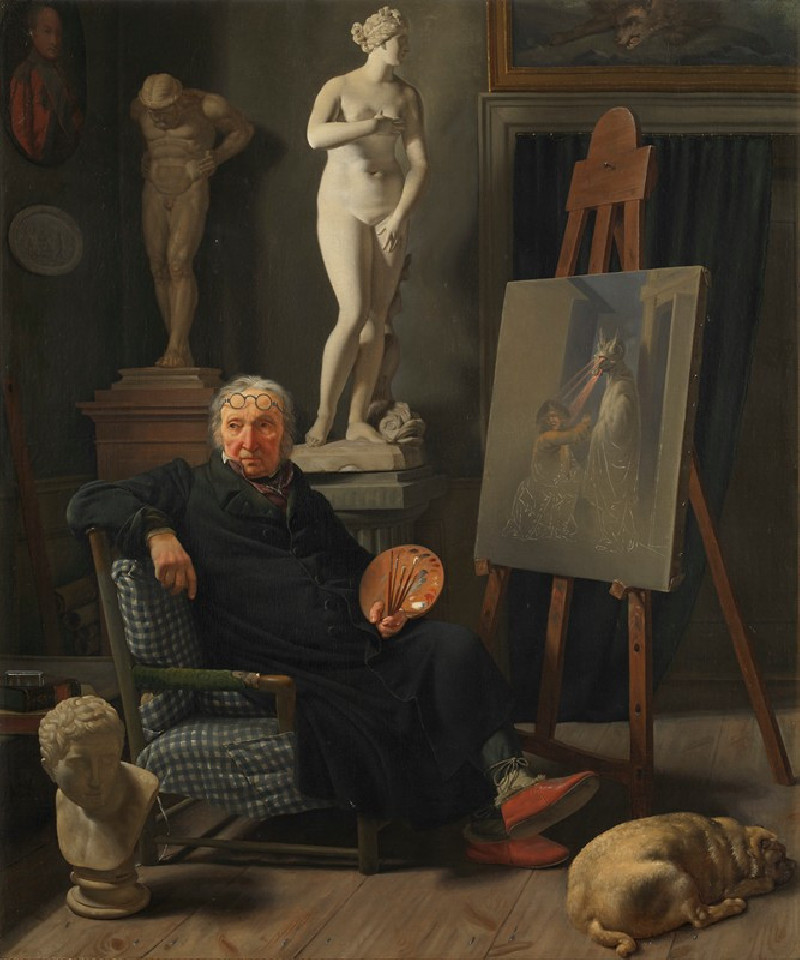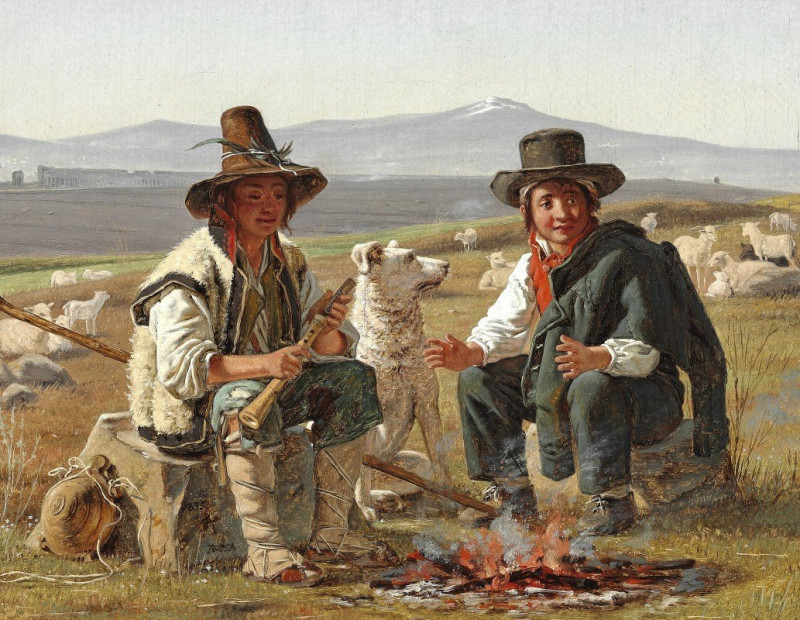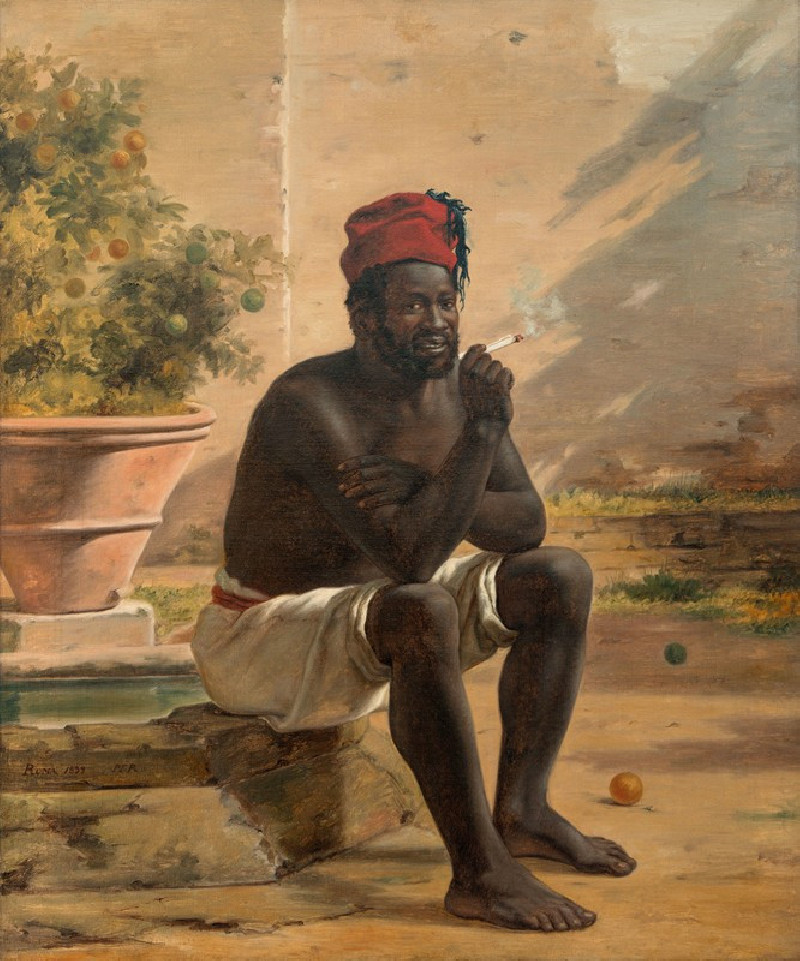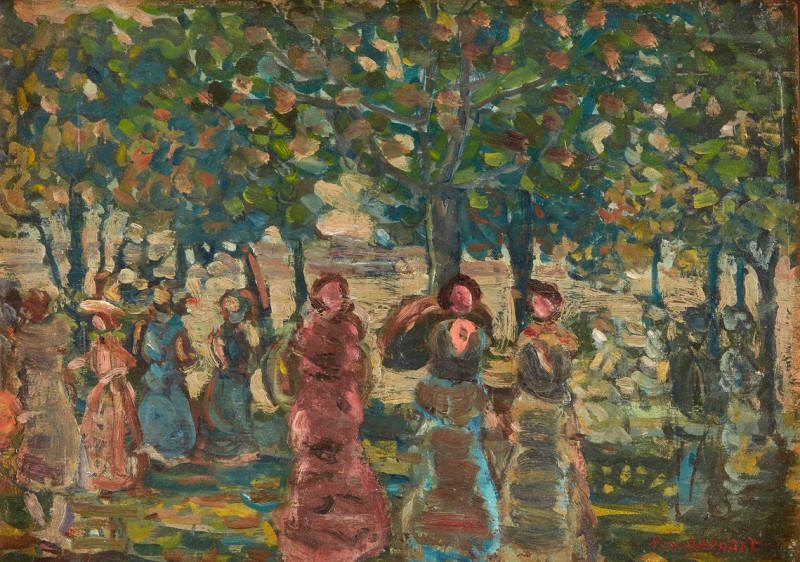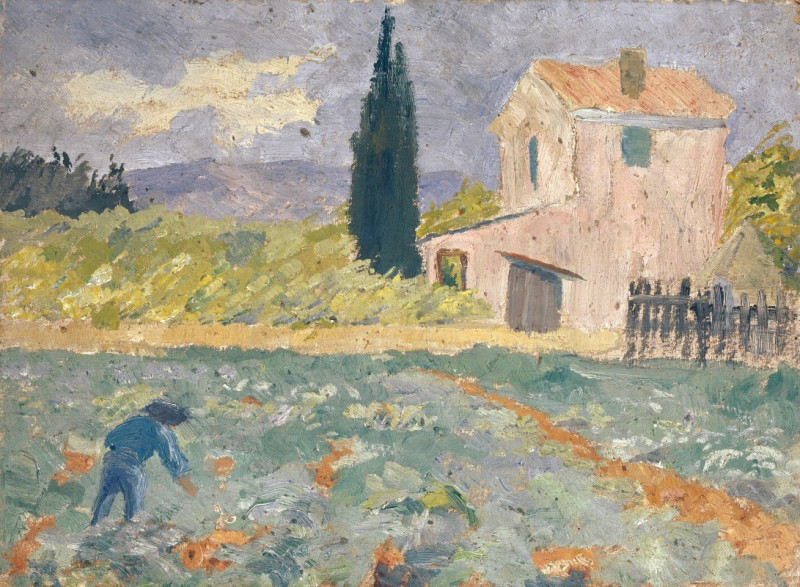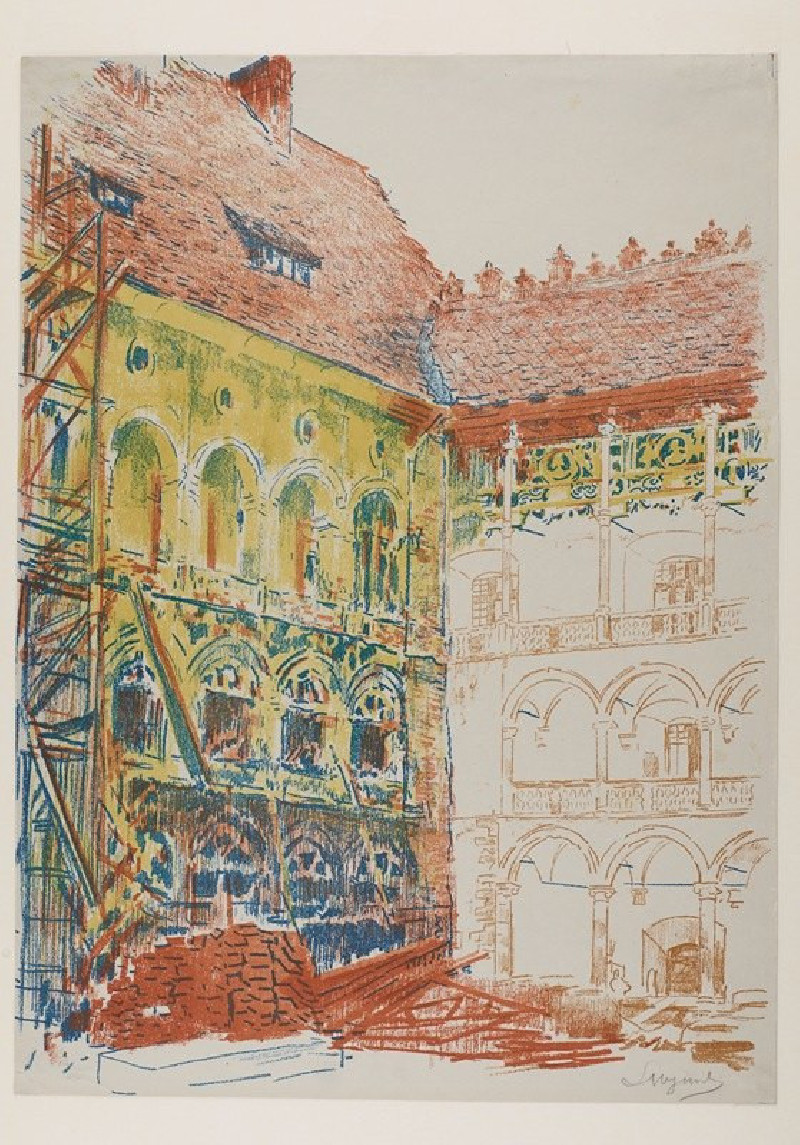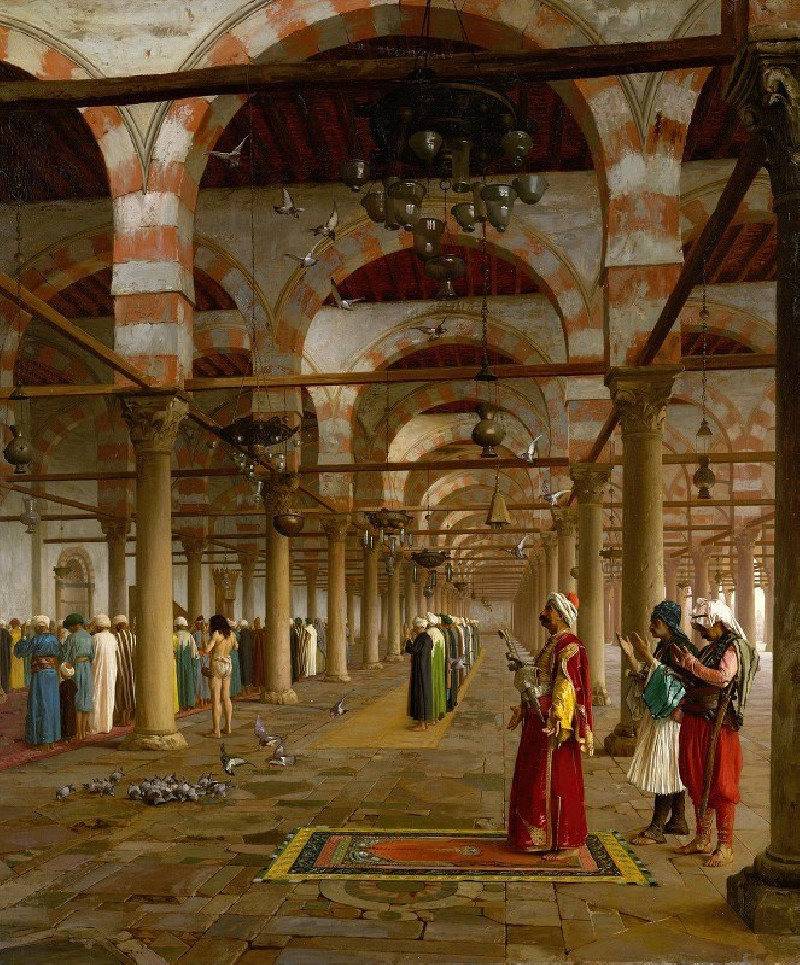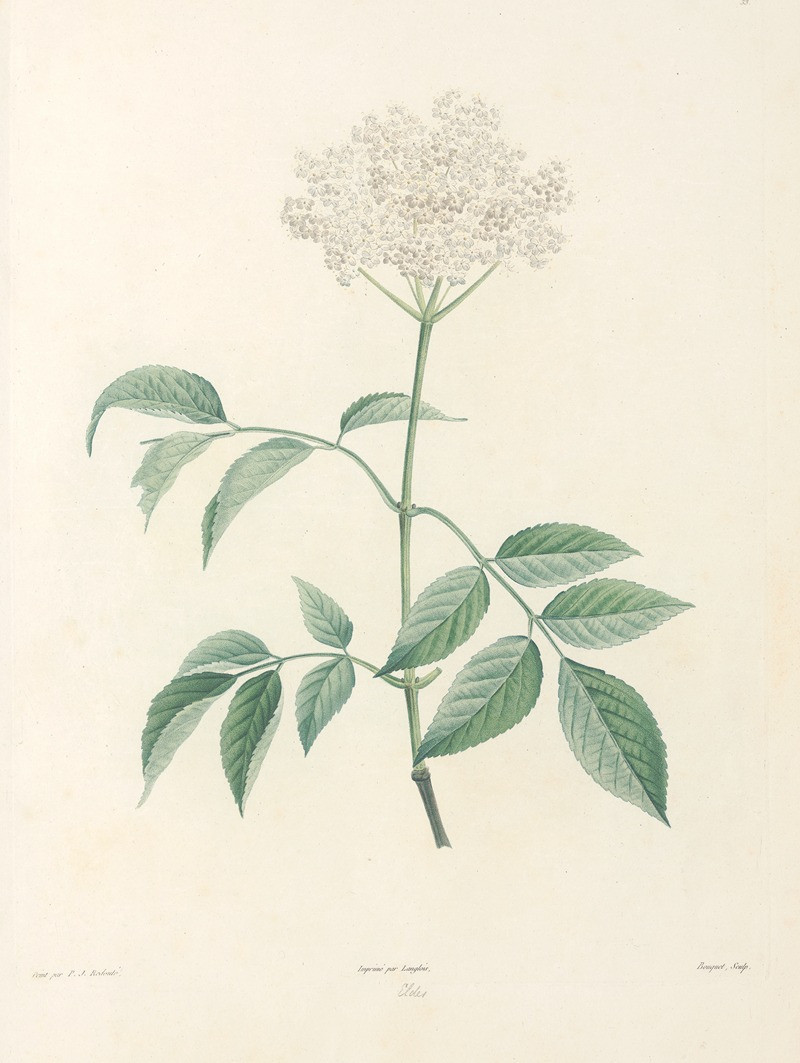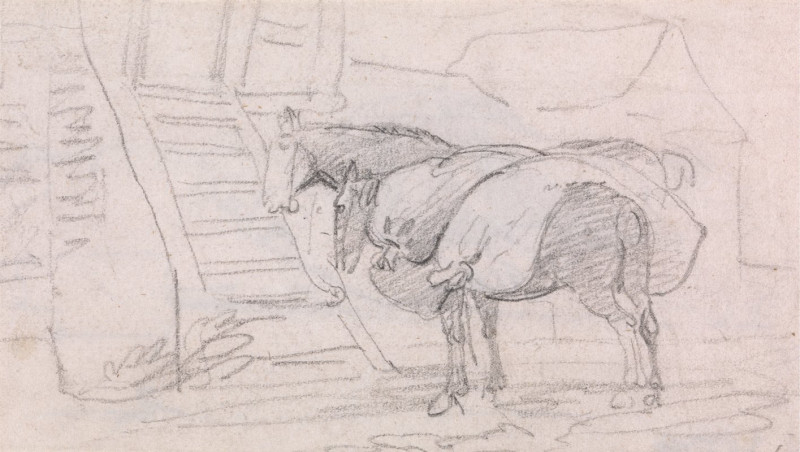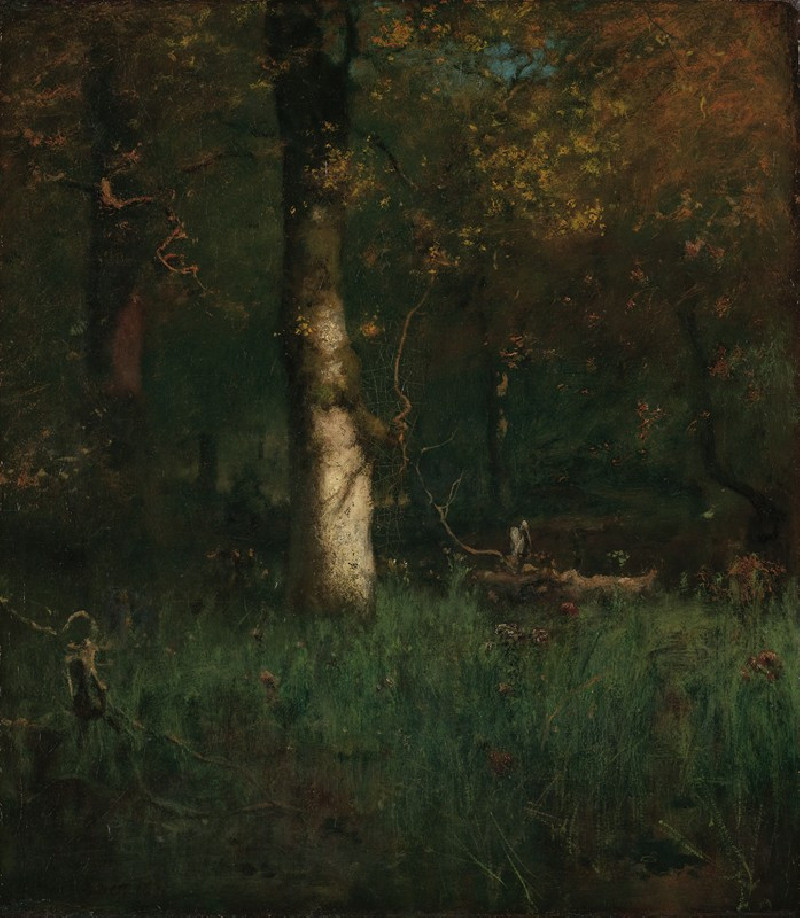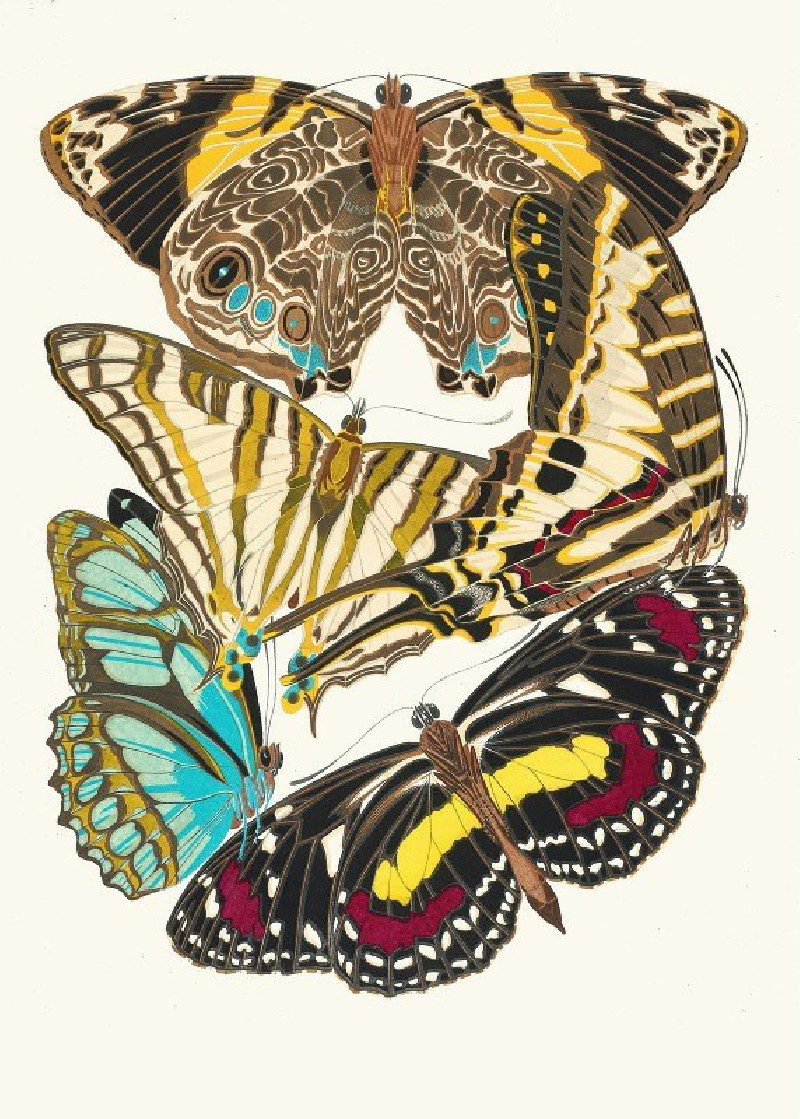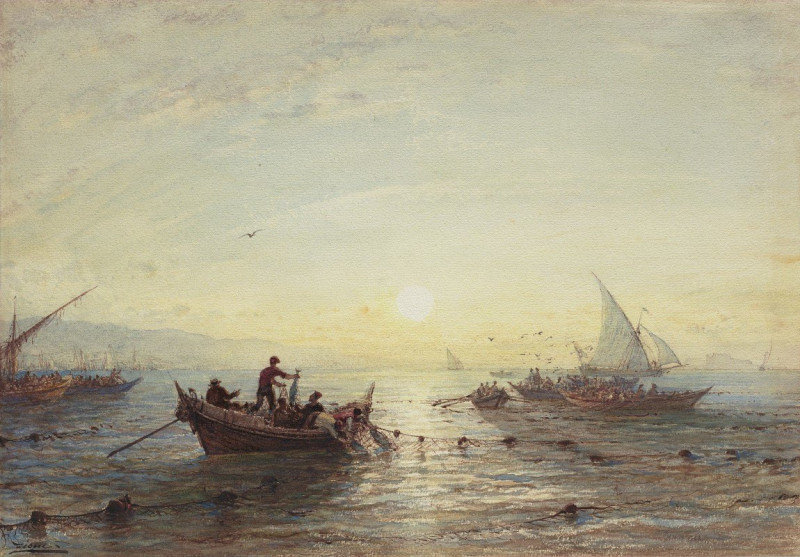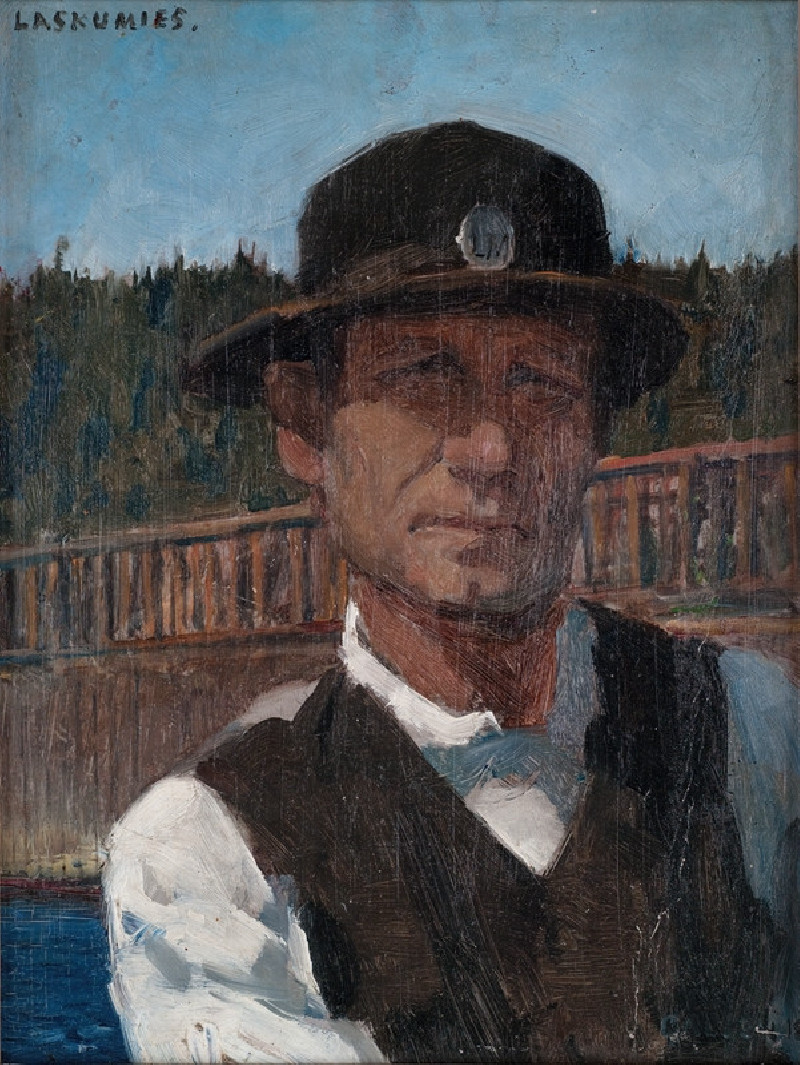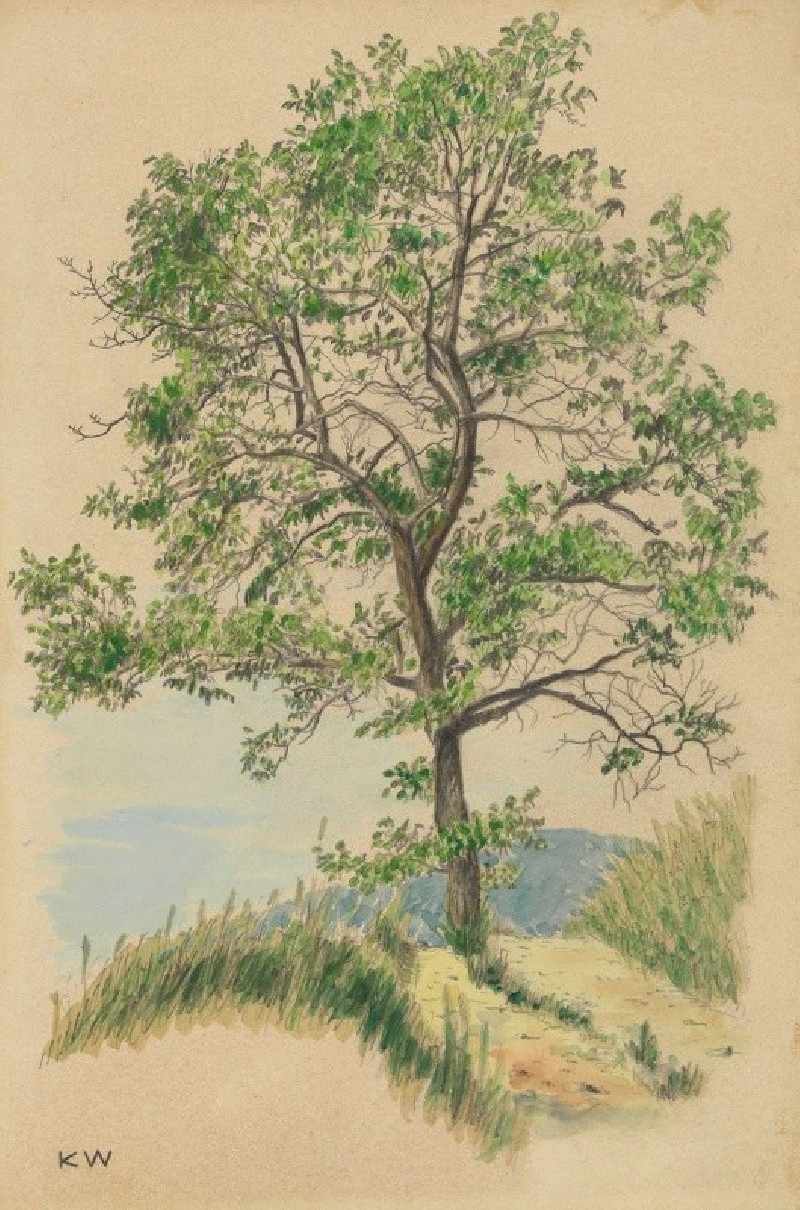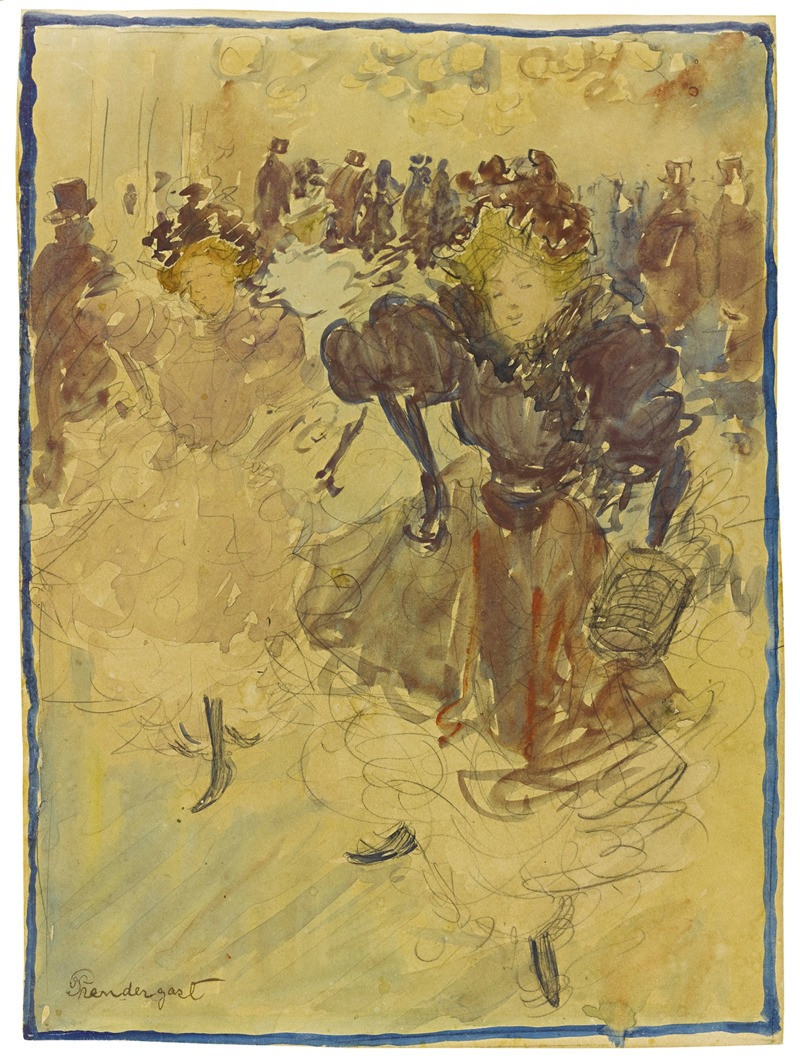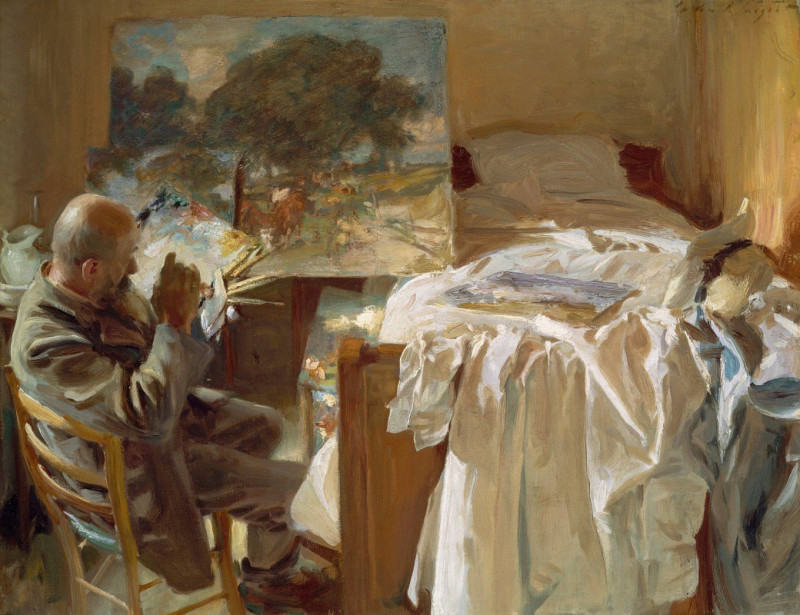The Coastline of Altona Seen from the East (1834)
Technique: Giclée quality print
Recommended by our customers
More about this artwork
Exploring the serenity and business of a maritime landscape, Martinus Rørbye's drawing, *The Coastline of Altona Seen from the East*, presents a detailed and nuanced view of Altona’s shores as they appeared in the early 19th century. This 1834 artwork utilizes subtle hues and detailed sketches to depict the bustling maritime activity of the period.In the foreground, weathered wooden posts emerge from the water, silhouetted against the softer background, hinting at a busy port rich in commerce and activity. Small boats manned with sailors and fishermen dot the waters, indicating the daily life and livelihood of the local inhabitants. The careful placement of these figures captures the rhythm of coastal and maritime life, suggesting both movement and the tranquility of a day at sea.The background is lined with an array of ships and boats, some moored and others slightly blurred into the horizon, establishing depth and perspective. This not only imbues the scene with a sense of bustling port activity but also reflects the artist's attention to the details of maritime architecture and ship design.Finally, the faintly sketched buildings and distant shoreline seen across the calm water lend a sense of place and context, inviting the viewer to ponder the life and times of Altona in the 1830s.
Delivery
Returns
Martinus Christian Wesseltoft Rørbye was a Danish painter, known both for genre works and landscapes. He was a central figure of the Golden Age of Danish painting during the first half of the 19th century.
The most traveled of the Danish Golden Age painters, he traveled both north to Norway and Sweden and south to Italy, Greece and Constantinople. He was also the first Danish painter to take to painting in Skagen at the northern top of Jutland, almost half a century before the thriving community of Skagen Painters formed and came to fame, through Michael Ancher, Anna Ancher and P.S. Krøyer.

